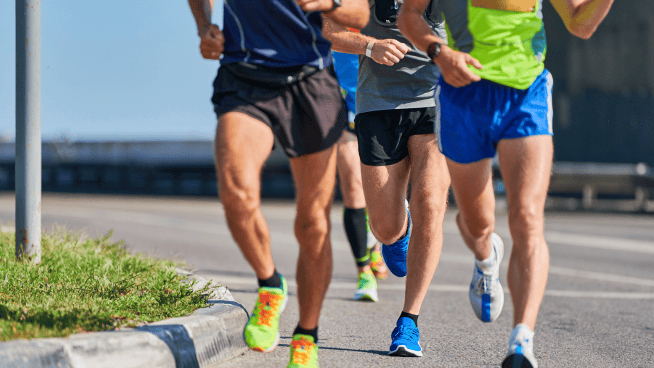Russian Twists: The Best Swimming Core Exercise for Sprint Freestylers
![]()
Want to power up your freestyle? The Russian Twist might just be the best core exercise for sprint freestylers. Here’s why.
Core strength is a fundamental part of fast swimming. Since my earliest days as an age grouper, my coach would invariably prescribe sets of Crunches, V-Sit Kicking and assorted Planks to be performed during our swimming workouts. And while we thought that was awesome—who doesn’t want a good-looking six-pack?—having a strong core goes far beyond having the prototypical swimmer’s body.
A strong core means you can keep technique together longer while applying more power to your kicking and your pulling motion.
For the fast-twitch athletes among us, few core exercises are better for swimmers than the Russian Twist. It chiefly targets your obliques, muscles that are responsible for turning your torso. For swimmers, strong obliques are necessary because they help fuel the rotational power that comes with a powerful arm stroke.
Here are the two main reasons why Russian Twists are my pick for top core exercise for sprint freestylers:
1. You develop rotational power in your upper torso.
Fast freestyle swimming requires you to be able to turn over your shoulders at a high rate of speed. Russian Twists simulate this movement. Given the high stroke rate necessary for elite level sprinting, athletes need core power to be able to turn over their shoulders and arms quickly to hit the high RPM stroke rates they require.
One of my favorite things to do with swimmers is a progression leading up to a swim meet that increases the speed with which they perform the movement, while also decreasing the weight. Sprinters should be able to bang these out remarkably quickly and with complete control.
2. The exercise forces you to keep your hips stable.
One of the common issues sprinters face is corkscrewing hips. This tends to happen when the are swimming at full speed and they take a breath. The turning of the upper torso to breathe tends to cause their feet to momentarily cross over and “hiccup” their flutter kicking. Also, corkscrewing hips happens because they rotate their hips too much when swimming at their peak speed.
Fast swimming requires a flatter and more stable hip position than you see with mid-distance freestylers and even longer sprints such as the 100 and 200 races. When you do Russian Twists, you are balanced on your butt with your legs extended. As you rotate your upper torso from side to side, the natural thing for your legs to do is swing from side to side.
The exercise requires focus to keep your hips and legs from “corkscrewing” out from under you. This mirrors the problem swimmers experience with hips that over-rotate when they sprint.
Tips for Implementing Russian Twists
To make this core exercise truly challenging, perform a flutter kick motion with your legs. Keeping a stable base while rotating your core and performing the kicking motion is super tough, but highly relevant to what you are trying to accomplish in the water.
Russian Twists are great for getting primed to swim fast as part of your regular meet warm-up and mobilization routine. Because they can be done with no load and no equipment, you can toss them into your usual dry land warm-up to help get your core ready to rock and roll in the water later.
Time the reps according to your goal stroke rate. One of my favorite ways to implement this exercise is to have swimmers perform dry runs of their goal stroke rate for their events performing Russian Twists. So for example, if a swimmer had a goal stroke count of 35 seconds in a 25-second race, I would have her perform 10 rounds of 35 Russian Twists within their goal time frame. Doing this helps the swimmer achieve her target stroke rate.
[cf]skyword_tracking_tag[/cf]RECOMMENDED FOR YOU
MOST POPULAR
Russian Twists: The Best Swimming Core Exercise for Sprint Freestylers
![]()
Want to power up your freestyle? The Russian Twist might just be the best core exercise for sprint freestylers. Here’s why.
Core strength is a fundamental part of fast swimming. Since my earliest days as an age grouper, my coach would invariably prescribe sets of Crunches, V-Sit Kicking and assorted Planks to be performed during our swimming workouts. And while we thought that was awesome—who doesn’t want a good-looking six-pack?—having a strong core goes far beyond having the prototypical swimmer’s body.
A strong core means you can keep technique together longer while applying more power to your kicking and your pulling motion.
For the fast-twitch athletes among us, few core exercises are better for swimmers than the Russian Twist. It chiefly targets your obliques, muscles that are responsible for turning your torso. For swimmers, strong obliques are necessary because they help fuel the rotational power that comes with a powerful arm stroke.
Here are the two main reasons why Russian Twists are my pick for top core exercise for sprint freestylers:
1. You develop rotational power in your upper torso.
Fast freestyle swimming requires you to be able to turn over your shoulders at a high rate of speed. Russian Twists simulate this movement. Given the high stroke rate necessary for elite level sprinting, athletes need core power to be able to turn over their shoulders and arms quickly to hit the high RPM stroke rates they require.
One of my favorite things to do with swimmers is a progression leading up to a swim meet that increases the speed with which they perform the movement, while also decreasing the weight. Sprinters should be able to bang these out remarkably quickly and with complete control.
2. The exercise forces you to keep your hips stable.
One of the common issues sprinters face is corkscrewing hips. This tends to happen when the are swimming at full speed and they take a breath. The turning of the upper torso to breathe tends to cause their feet to momentarily cross over and “hiccup” their flutter kicking. Also, corkscrewing hips happens because they rotate their hips too much when swimming at their peak speed.
Fast swimming requires a flatter and more stable hip position than you see with mid-distance freestylers and even longer sprints such as the 100 and 200 races. When you do Russian Twists, you are balanced on your butt with your legs extended. As you rotate your upper torso from side to side, the natural thing for your legs to do is swing from side to side.
The exercise requires focus to keep your hips and legs from “corkscrewing” out from under you. This mirrors the problem swimmers experience with hips that over-rotate when they sprint.
Tips for Implementing Russian Twists
To make this core exercise truly challenging, perform a flutter kick motion with your legs. Keeping a stable base while rotating your core and performing the kicking motion is super tough, but highly relevant to what you are trying to accomplish in the water.
Russian Twists are great for getting primed to swim fast as part of your regular meet warm-up and mobilization routine. Because they can be done with no load and no equipment, you can toss them into your usual dry land warm-up to help get your core ready to rock and roll in the water later.
Time the reps according to your goal stroke rate. One of my favorite ways to implement this exercise is to have swimmers perform dry runs of their goal stroke rate for their events performing Russian Twists. So for example, if a swimmer had a goal stroke count of 35 seconds in a 25-second race, I would have her perform 10 rounds of 35 Russian Twists within their goal time frame. Doing this helps the swimmer achieve her target stroke rate.
[cf]skyword_tracking_tag[/cf]









